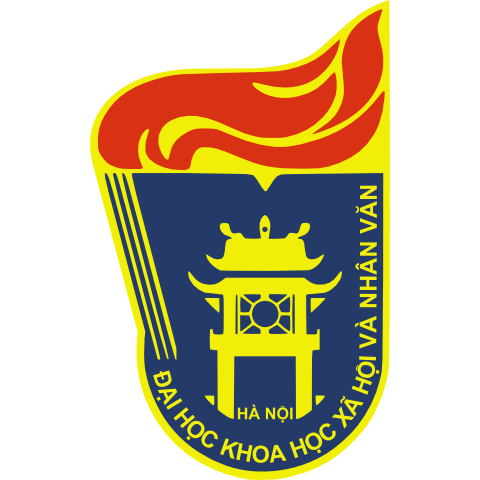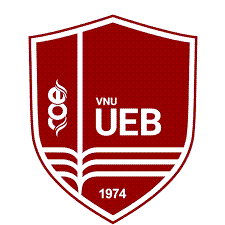
SEA/RC62/15 - Follow-up action on pending issues and selected regional committee resolutions/decisions for the last three years: update on the progress and challenges in polio eradication / World Health Organization. Regional Office for South-East Asia
Tác giả : World Health Organization. Regional Office for South-East Asia
Nhà xuất bản : WHO Regional Office for South-East Asia
Năm xuất bản : 2009
Chủ đề : 1. Governing body documents.
Thông tin chi tiết
| Tóm tắt : | Polio eradication continues to be a priority in the South-East Asia Region. In the first four months of 2009*, 40 polio cases were detected in India with 14 type 1 poliovirus (P1) and 26 type 3 poliovirus (P3) cases. This paper presents an update on the progress and challenges in polio eradication. At the start of 2008 a reduction in the transmission of P1 cases, particularly in western Uttar Pradesh (UP) was seen, which, however, was offset by re-importation from Bihar in the latter half of the year, resulting in 62 type P1 cases. Rapid and large-scale mop-up immunizations prevented P1 importation into neighbouring states. The type P3 outbreak of 2007 was rapidly controlled with massive outbreak response and mop-up operations. There are several challenges to the eradication of polio from the Region. The principal challenge in India is overcoming suboptimal vaccine efficacy in the districts of western UP, which continues to be polio-endemic. Another key challenge in the endemic areas is the low levels of sanitation and personal hygiene. While some efforts have been made by the government, these are at present not of sufficient scale to have an impact. More needs to be done in this area. The main challenge for other countries in the Region, in particular the countries that share an open border with India, is to protect their polio-free status by preventing reinfection. A strong routine immunization programme that can deliver and maintain OPV3 coverage greater than 80% in all districts in all countries will help prevent reinfection. Additionally, all polio-free countries must conduct periodic risk assessment to determine the level of risk of reinfection and its spread, and to decide whether or not polio immunization campaigns will be required to boost population immunity. Finally, polio eradication requires substantial funding. A substantial proportion is being met through external funding. Member States can help the eradication effort by committing funds for surveillance, outbreak response, and strengthening routine immunization delivery. The attached working paper was submitted to the High-Level Preparatory (HLP) Meeting for its review and recommendations for consideration by the Sixty-second Session of the Regional Committee. The HLP meeting made the following recommendations: Action by Member States (1) To provide funds to improve and sustain high routine immunization coverage in all districts of the country and provide funds to strengthen AFP surveillance as relevant to the Member State; (2) conduct periodic risk assessment for polio importation and reinfection, particularly in those Member States in close proximity to the polio-endemic areas. Action by WHO/SEARO (1) Review the criteria used for risk assessment for polio and provide these for use by Member States; (2) in Member States that rely on the support of WHO-supported surveillance medical officers networks should support all vaccine-preventable disease surveillance; (3) work with Member States and with donors to maintain the required levels of funding for polio eradication, routine immunization and vaccine preventable disease control, including surveillance. The paper is now submitted to the Sixty-second Session of the Regional Committee for its consideration. |
Thông tin dữ liệu nguồn
| Thư viện | Ký hiệu xếp giá | Dữ liệu nguồn |
|---|---|---|
 Tổ chức y tế thế giới
Tổ chức y tế thế giới
|
|
https://iris.who.int/handle/10665/128464 |






 Đại học Công nghệ - ĐHQGHN
Đại học Công nghệ - ĐHQGHN  Đại học Giáo dục - ĐHQGHN
Đại học Giáo dục - ĐHQGHN  Đại học khoa học tự nhiên - ĐHQGHN
Đại học khoa học tự nhiên - ĐHQGHN  Đại học Khoa học Xã hội và Nhân văn - ĐHQGHN
Đại học Khoa học Xã hội và Nhân văn - ĐHQGHN  Đại học Kinh tế - ĐHQGHN
Đại học Kinh tế - ĐHQGHN  Đại học Ngoại ngữ - ĐHQGHN
Đại học Ngoại ngữ - ĐHQGHN  Đại học quốc gia Hà Nội
Đại học quốc gia Hà Nội  Đại học Y - Dược - ĐHQGHN
Đại học Y - Dược - ĐHQGHN  Học Viện Hàng Không Việt Nam
Học Viện Hàng Không Việt Nam  Thư viện Huyện Bình Chánh - TVKHTH TP.HCM
Thư viện Huyện Bình Chánh - TVKHTH TP.HCM  Thư viện huyện Bình Minh - TV Vĩnh Long
Thư viện huyện Bình Minh - TV Vĩnh Long  Thư viện huyện Bình Tân - TV Vĩnh Long
Thư viện huyện Bình Tân - TV Vĩnh Long  Thư viện Huyện Cần Giờ - TVKHTH TP.HCM
Thư viện Huyện Cần Giờ - TVKHTH TP.HCM  Thư viện Huyện Củ Chi - TVKHTH TP.HCM
Thư viện Huyện Củ Chi - TVKHTH TP.HCM  Thư viện Huyện Hóc Môn - TVKHTH TP.HCM
Thư viện Huyện Hóc Môn - TVKHTH TP.HCM  Thư viện huyện Long Hồ - TV Vĩnh Long
Thư viện huyện Long Hồ - TV Vĩnh Long  Thư viện huyện Mang Thít - TV Vĩnh Long
Thư viện huyện Mang Thít - TV Vĩnh Long  Thư viện Huyện Nhà Bè - TVKHTH TP.HCM
Thư viện Huyện Nhà Bè - TVKHTH TP.HCM  Thư viện huyện Tam Bình - TV Vĩnh Long
Thư viện huyện Tam Bình - TV Vĩnh Long  Thư viện huyện Trà Ôn - TV Vĩnh Long
Thư viện huyện Trà Ôn - TV Vĩnh Long  Thư viện Khoa học Tổng hợp TP.HCM
Thư viện Khoa học Tổng hợp TP.HCM  Thư viện quận 1 - TVKHTH TP.HCM
Thư viện quận 1 - TVKHTH TP.HCM  Thư viện quận 10 - TVKHTH TP.HCM
Thư viện quận 10 - TVKHTH TP.HCM  Thư viện quận 11 - TVKHTH TP.HCM
Thư viện quận 11 - TVKHTH TP.HCM  Thư viện quận 12 - TVKHTH TP.HCM
Thư viện quận 12 - TVKHTH TP.HCM  Thư viện quận 2 - TVKHTH TP.HCM
Thư viện quận 2 - TVKHTH TP.HCM  Thư viện quận 3 - TVKHTH TP.HCM
Thư viện quận 3 - TVKHTH TP.HCM  Thư viện quận 4 - TVKHTH TP.HCM
Thư viện quận 4 - TVKHTH TP.HCM  Thư viện quận 5 - TVKHTH TP.HCM
Thư viện quận 5 - TVKHTH TP.HCM  Thư viện quận 6 - TVKHTH TP.HCM
Thư viện quận 6 - TVKHTH TP.HCM  Thư viện quận 7 - TVKHTH TP.HCM
Thư viện quận 7 - TVKHTH TP.HCM  Thư viện quận 8 - TVKHTH TP.HCM
Thư viện quận 8 - TVKHTH TP.HCM  Thư viện quận Bình Tân - TVKHTH TP.HCM
Thư viện quận Bình Tân - TVKHTH TP.HCM  Thư viện quận Bình Thạnh - TVKHTH TP.HCM
Thư viện quận Bình Thạnh - TVKHTH TP.HCM  Thư viện quận Gò Vấp - TVKHTH TP.HCM
Thư viện quận Gò Vấp - TVKHTH TP.HCM  Thư viện quận Phú Nhuận - TVKHTH TP.HCM
Thư viện quận Phú Nhuận - TVKHTH TP.HCM  Thư viện quận Tân Bình - TVKHTH TP.HCM
Thư viện quận Tân Bình - TVKHTH TP.HCM  Thư viện quận Tân Phú - TVKHTH TP.HCM
Thư viện quận Tân Phú - TVKHTH TP.HCM  Thư viện Quốc gia Việt Nam
Thư viện Quốc gia Việt Nam  Thư viện thành phố Thủ Đức (cơ sở 1) - TVKHTH TP.HCM
Thư viện thành phố Thủ Đức (cơ sở 1) - TVKHTH TP.HCM  Thư viện thành phố Thủ Đức (cơ sở 2) - TVKHTH TP.HCM
Thư viện thành phố Thủ Đức (cơ sở 2) - TVKHTH TP.HCM  Thư Viện Tỉnh An Giang
Thư Viện Tỉnh An Giang  Thư viện tỉnh Vĩnh Long
Thư viện tỉnh Vĩnh Long  Trung tâm giáo dục quốc phòng và An ninh - ĐHQGHN
Trung tâm giáo dục quốc phòng và An ninh - ĐHQGHN  Trung tâm Hỗ trợ Sinh viên - ĐHQGHN
Trung tâm Hỗ trợ Sinh viên - ĐHQGHN  Trường Đại học Luật - ĐHQGHN
Trường Đại học Luật - ĐHQGHN  Trường Khoa học liên ngành và nghệ thuật - ĐHQGHN
Trường Khoa học liên ngành và nghệ thuật - ĐHQGHN  Trường Quản trị và Kinh doanh - ĐHQGHN
Trường Quản trị và Kinh doanh - ĐHQGHN  Viện Công nghệ Thông tin - ĐHQGHN
Viện Công nghệ Thông tin - ĐHQGHN  Viện Đảm bảo chất lượng giáo dục - ĐHQGHN
Viện Đảm bảo chất lượng giáo dục - ĐHQGHN  Viện Quốc tế Pháp ngữ - ĐHQGHN
Viện Quốc tế Pháp ngữ - ĐHQGHN  Viện Tài nguyên và Môi trường - ĐHQGHN
Viện Tài nguyên và Môi trường - ĐHQGHN  Viện Vi sinh vật và Công nghệ Sinh học - ĐHQGHN
Viện Vi sinh vật và Công nghệ Sinh học - ĐHQGHN  Viện Việt Nam học và Khoa học phát triển - ĐHQGHN
Viện Việt Nam học và Khoa học phát triển - ĐHQGHN